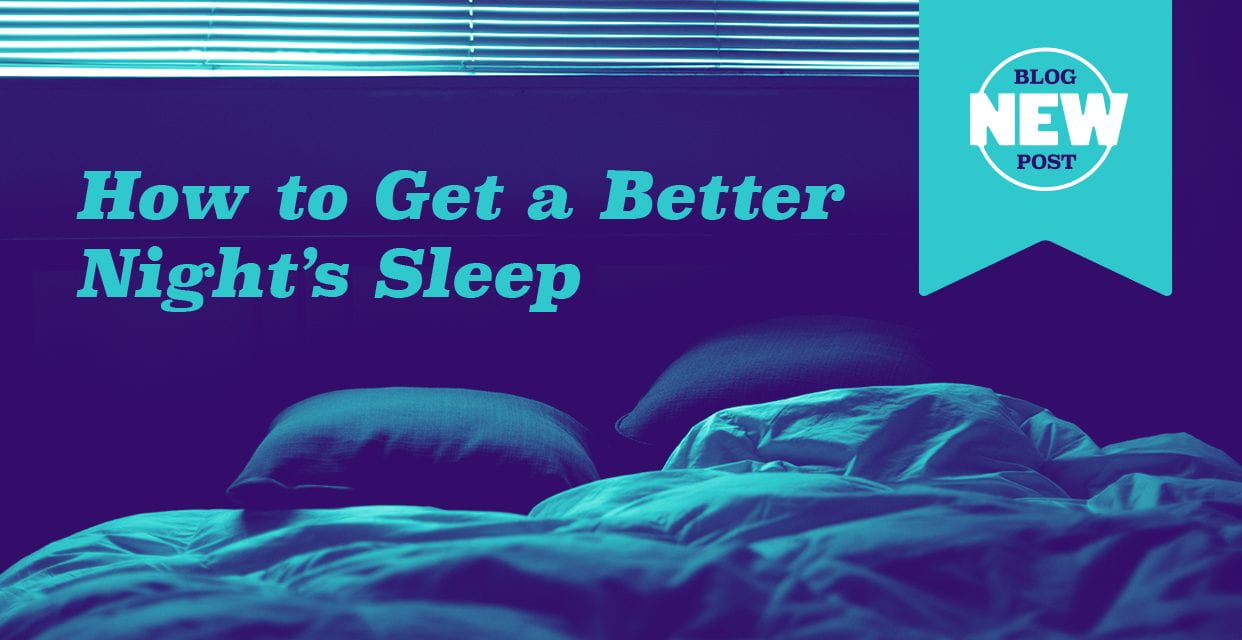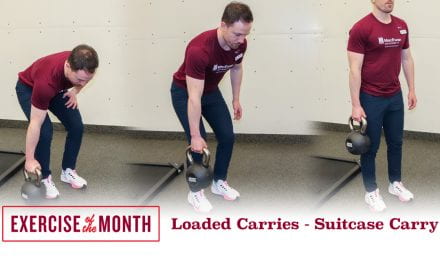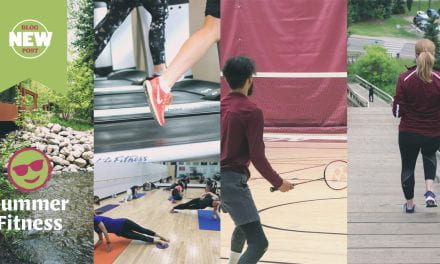A common topic I hear discussed throughout my day is sleep. More specifically, comments about someone’s lack of sleep. Sound familiar? If so, it might be time for some reflection of your sleeping habits and what you can do to improve your shut-eye.
Knowing the amount of sleep you need is a perfect place to start. The current sleeping recommendation for an adult aged 18-64 needs is seven to nine hours. For adults 65 and over, that range falls to seven to eight hours of sleep. If you’re in your recommended range, then you’re doing better than most Canadians! If not, then here are some tips in the hunt for that well-rested feeling.
Build a Schedule
Begin with creating a schedule that makes more time for sleep. Don’t put off that housework until right before bed. Do it right when you get home or start it sooner after dinner because you know that it always takes longer to mow to the lawn or do the dishes than you think it will. You can also use your smartphone or smartwatch to set a reminder that it’s time to stop what you’re doing and head to bed so you don’t get sucked into that next episode of the show you’re binging. Some phones and apps have this feature built-in. Once you create your bedtime and wake-up time, keep these regular to help train your body’s natural rhythm.
Improve Quality
The other aspect of sleep besides how long you sleep for is your quality of sleep. Quality of sleep has many factors that affect it, and sometimes this can lead to some trial and error tactics to find what works best for you. Here are some tips to help maximize your sleep quality.
- Create a bedtime routine
The human body loves routines; that’s why you always seem to get hungry around the same time each day because that’s what you’re used to doing. A routine doesn’t have to be complex; just a short amount of time doing the same set of things regularly, like washing your face and brushing your teeth before getting in bed at night, will help signal your body that it’s time to wind down. Adding in other steps like setting time aside to stretch, meditate, or setting out your clothes for the next day will have a calming effect and make your mornings less rushed.
- Limit screen time
Smartphones, computers, and televisions emit a very bright light that we often have closer than we should to our eyes. This light is very stimulating, made of vivid colours and moving scenes that increase brain activity. We want to allow the brain to have low stimulation before getting in bed so that when we do get in, the massive action scene you just watched isn’t still blasting away in the front of your mind.
- Sleep environment
There are a few key things that make a bedroom the perfect room for sleep. Make sure it’s dark; light-blocking curtains, blinds, or a sleep mask are a must, especially if you’ve got a street light right outside your window. Keep it cool; we sleep better when the room is at a slightly colder temperature than you would usually keep your house during the day, plus most of us feel more comfortable with the weight of a blanket on top, meaning a cooler room will make you feel extra snug. Quiet is key. Keep things like that can make inconsistent noise out of your bedroom.
Proper Position
Proper sleep position is the last tip we will touch on and is more complex than you think. Whether you are a side, back, or stomach sleeper, having the right amount of pillows in critical places to bolster your body will help to prevent soreness in the morning.
- Back sleepers need a reasonably thin pillow under their head, one just thick enough to support the natural curve in their neck, and a pillow about the same thickness as your pelvis placed under the knees to keep them in a slightly bent position.
- Side sleepers need much more head and neck support. The pillow under your head and neck should be the same thickness as the distance from the outside of your shoulder to the base of your neck muscles. The proper thickness will allow the head to rest in a neutral position instead of being let down or cranked up by the pillow. The goal is to have both ears equal distance from their respective shoulders. A second pillow of similar thickness sits against your chest and will support your top arm and shoulder from collapsing in on your chest. Think of it as hugging that pillow for the whole night. Side sleepers get a third pillow. This pillow can vary in thickness based on your body size and preference, but a general guide is for it to be as thick as the gap between your knees when you stand with your feet hip-width apart. This pillow sits between your knees while you sleep to limit twisting of the lower body, reducing tension through the low back and hips.
- Stomach sleeping is the least recommended position by most therapists, and many might encourage you to try to transition to sleeping on your side, or preferably your back. However, if you absolutely cannot transition to falling asleep without being on your stomach, there is still a way to make it better for your body. Using two to three pillows, the goal here is to slightly raise the side of your body that your head faces the most. In this example, we’ll say that your nose faces to your right while you sleep. The first pillow will sit under your right chest, shoulder, and arm, extending down your body. The next will sit under the right hip and pelvis, allowing your right leg to be in a bent position with your thigh over this pillow and your knee pointing out to the right. The pillow should let the right knee touch your mattress. Using a head pillow in conjunction with the pillow under your chest is optional, depending on the thickness of your body pillows. The head pillow should be thinner than the chest pillow so that your head is not extended past your upper back, much like when you are standing up straight and looking to the side.
Much effort goes into researching how to sleep better every year. Your Athletic Therapist or doctor can direct you to resources that will assist you in understanding what we spend about a third of our day doing. If your sleep troubles continue, your family doctor may be able to refer you to a sleep expert for further consultation. Sleep is one of the most valuable recovery tools for the body and mind.
The Athletic Therapy at MacEwan is located in the Christenson Family Centre for Sport and Wellness, 8-125. Call 780-497-5492 or email athletictherapy@macewan.ca to book an initial assessment. Visit www.MacEwan.ca/AthleticTherapy for more information.
Paul Trevor CAT(C)
After completing an Honours BSc. in Biology with a minor in Geography from Trent University, Paul graduated from the Honours BAHS in Athletic Therapy program at Sheridan College in 2018. His time at Sheridan included an internship with the Raptors 905, an NBA G League team. Paul is now a Certified Athletic Therapist working with the Varsity Hockey program at MacEwan University for the past three seasons. In his spare time, Paul enjoys snowboarding, camping, and cycling.




